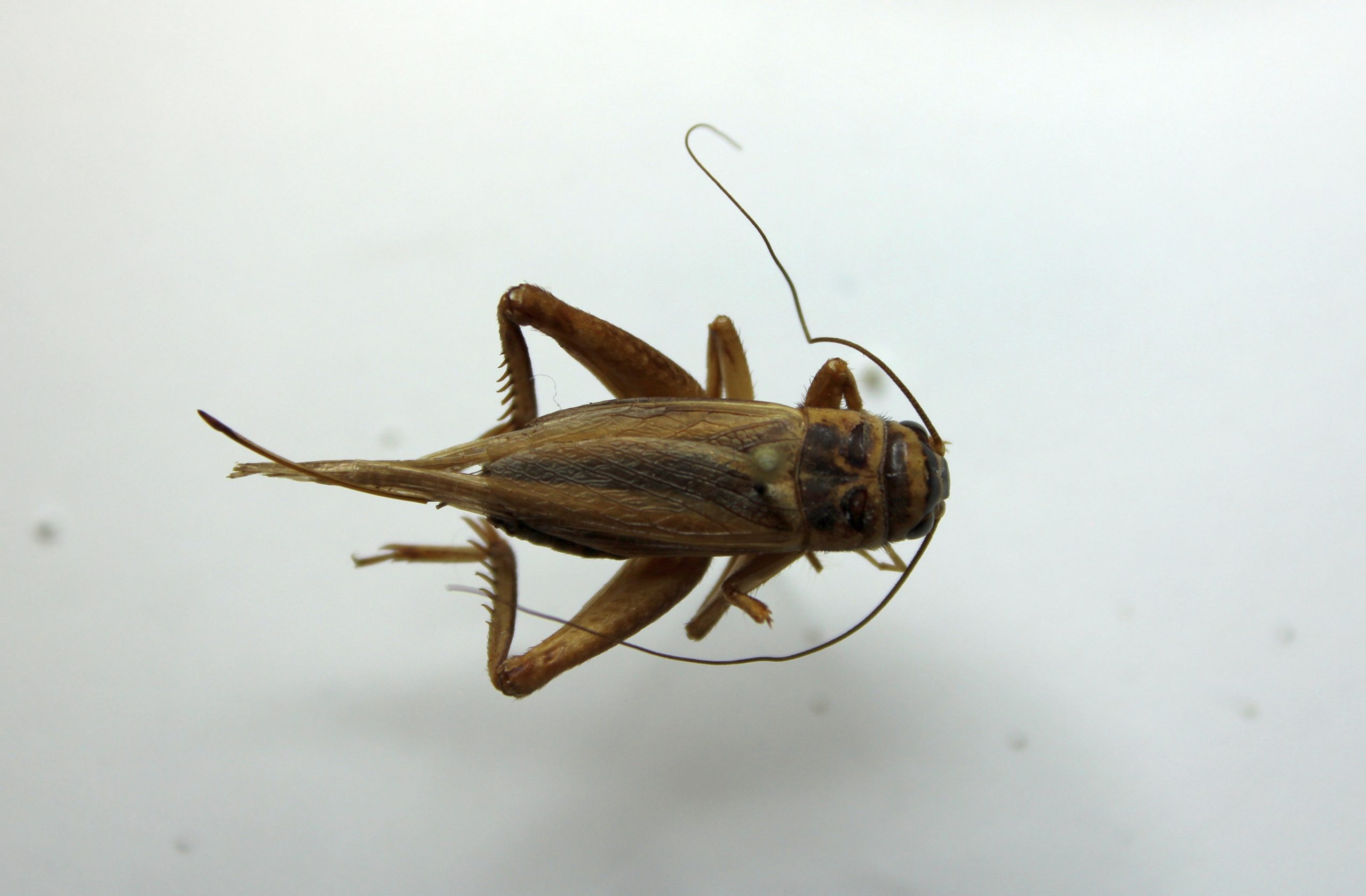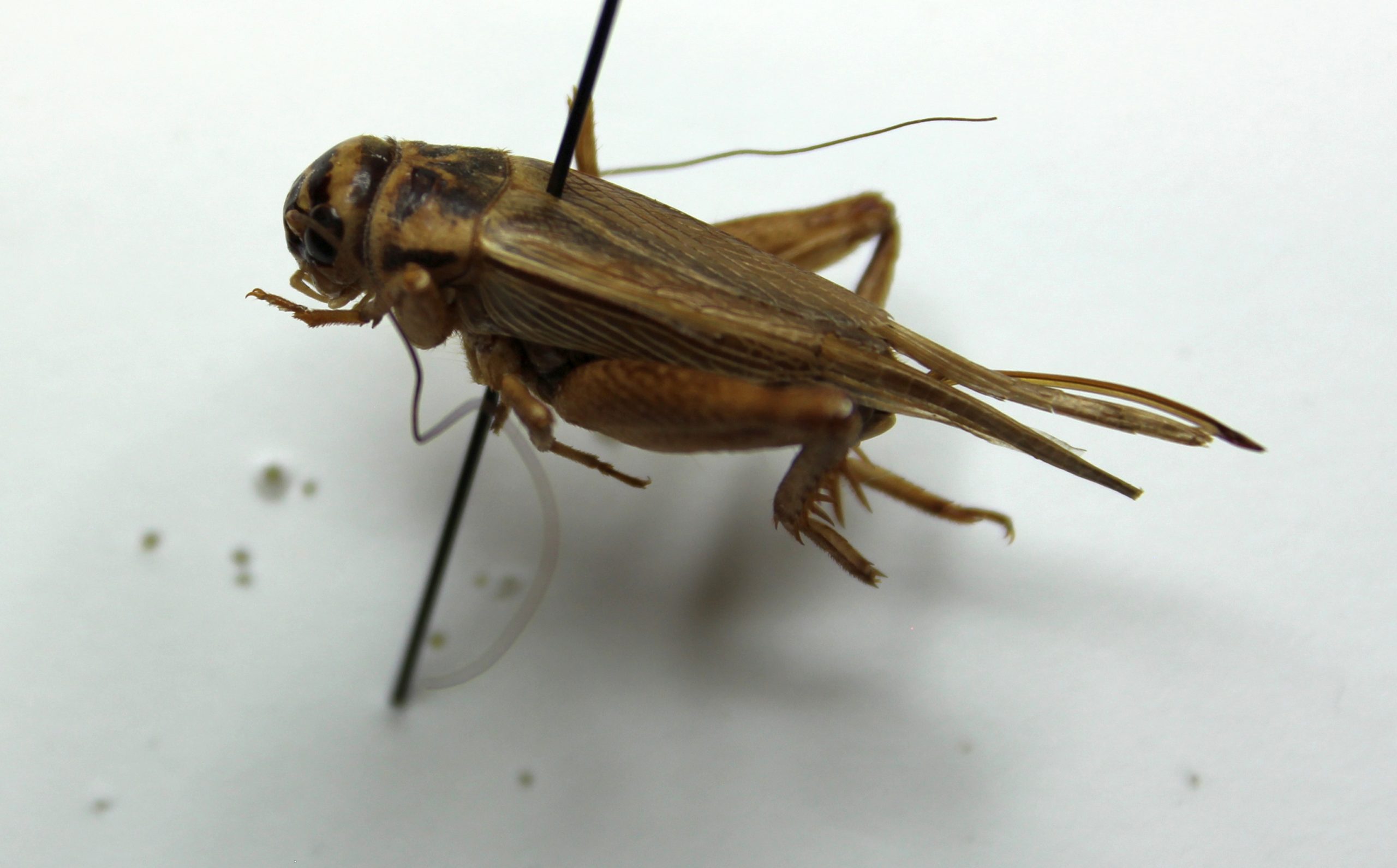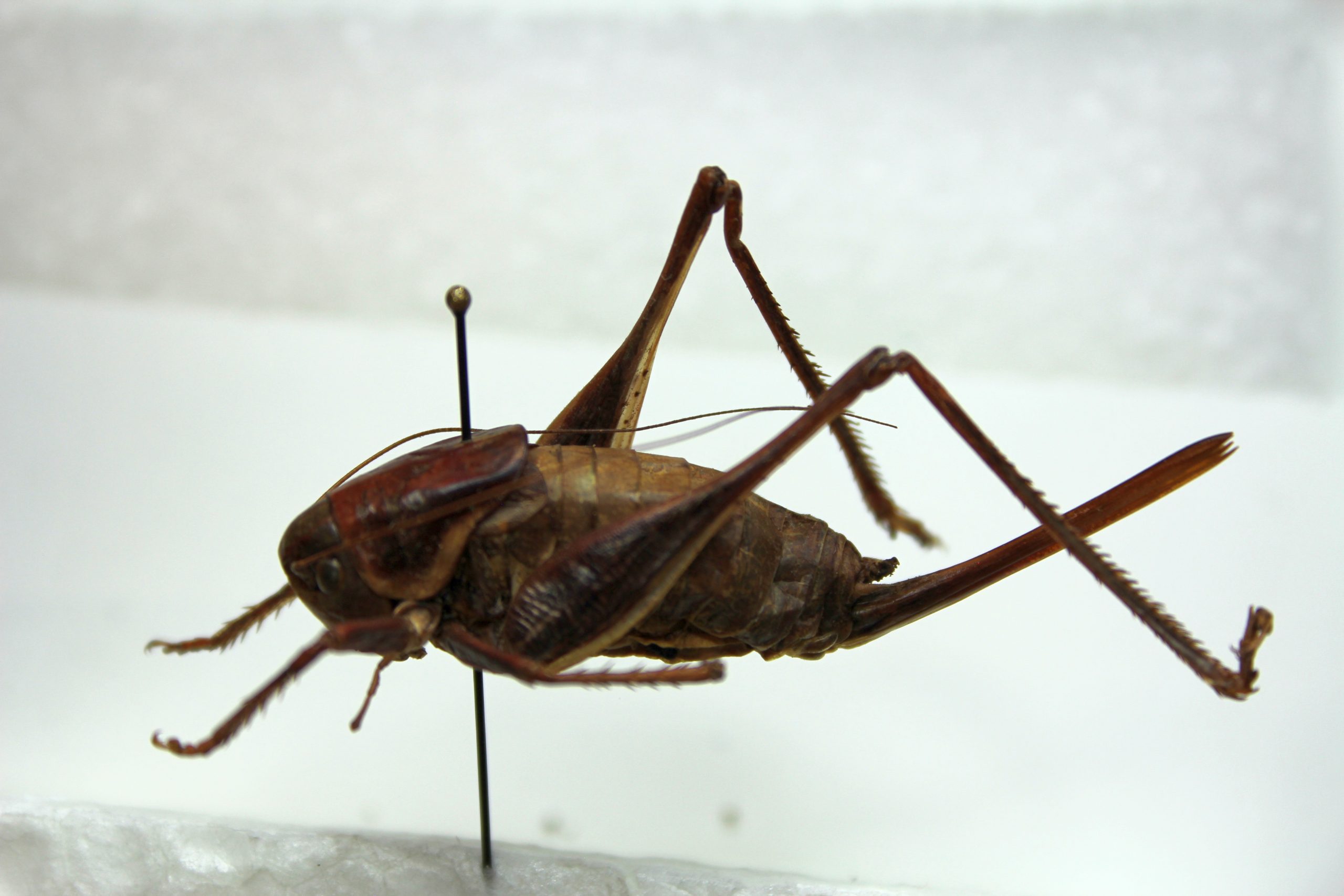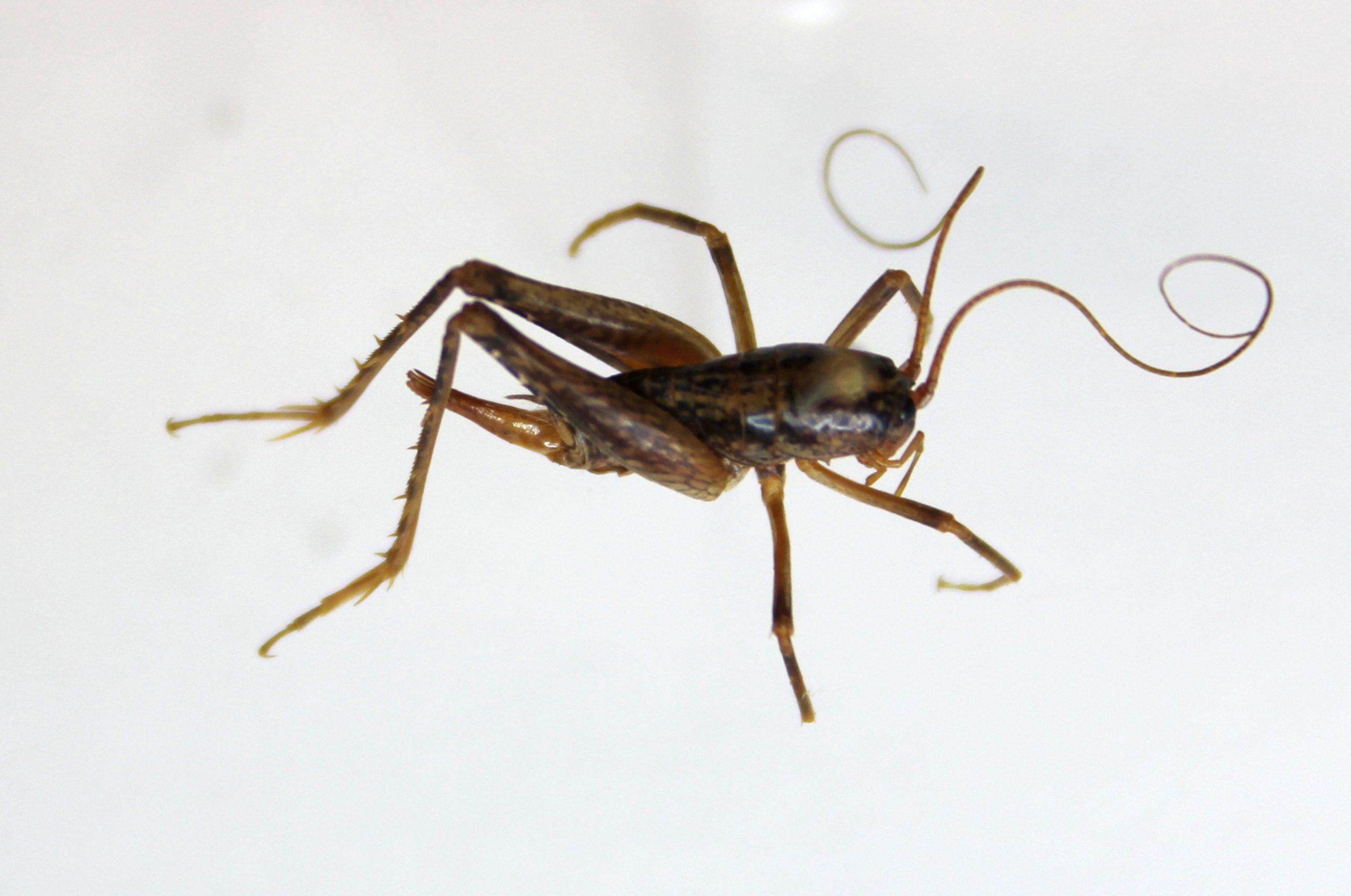40 Orthoptera – Ensifera
Ensifera
The Ensifera, or long-horned grasshoppers (referring to their relatively long antennae), includes three families, the Gryllidae, the Tettigoniidae, and the Raphidophoridae, that you will see in this lab. Many insects in this suborder are cryptic. New species are being described all the time, especially from the tropics. There are some important economic pest insects in this group, but they can also be cultivated as food for humans and domestic animals including pets. There are about 40 species in BC.
Gryllidae
The family Gryllidae, or crickets, are common in open fields and other environments. They are omnivorous, and are sometimes found in homes seeking warmth and shelter. Several species are very easy to breed in captivity. These are used in the pet industry, and are now being mass-reared (even in North America) to produce protein-rich food/supplements for humans as well. Again, although your text includes key steps to determine subfamilies, you do not need to identify specimens in the lab (or your collections) to this level.


Tettigoniidae
The family Tettigoniidae, or katydids, also tend to frequent open fields. Many katydids are coloured and elaborately sculpted to resemble the vegetation on which they feed and rest. They can be relatively large, and the females often have large, noticeable ovipositors for placing eggs in the soil or in plant material. The jumping hind legs can also be quite pronounced. Some species have reduced wings as adults.


Raphidophoridae
The Raphidophoridae, or cave crickets, are sometimes collected by students in this class. They occasionally enter buildings, and are usually found in dark, slightly humid, enclosed spaces. They can be quite small, and usually have reduced (or absent) wings as adults.



Feedback/Errata